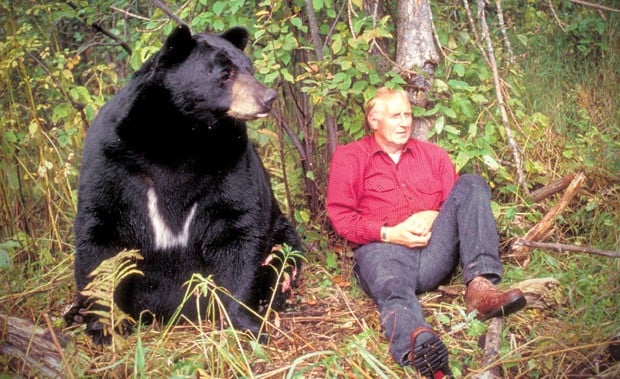Ursa Major: Life-long bear biologist Lynn Rogers is known as the “Jane Goodall of Black Bears.”
![]()
Most people think Lynn Rogers is crazy. The 71-year-old wildlife biologist walks with bears. He follows black bears for miles as they search for food through the Northwoods of Minnesota, trudging through marshes, straddling fallen trees, and kayaking across lakes to keep up with them. He studies their behavior and development from extremely close distances over 24-hour periods, sometimes even resting right beside them. Because of the trust these bears have for him, he’s become known as the “Jane Goodall of black bears.”
Rogers, head of Minnesota’s Wildlife Research Institute, has authored dozens of peer-reviewed papers on black bears. Several of his discoveries are owed to his close contact with bears. In over 40 years of research, though, he believes his most important finding is that black bears are not the vicious animals we once thought they were.
Bear Basics
In the Southeastern U.S., the black bear population is growing steadily. That’s why bears are classified as game animals in states like Tennessee, Virginia, and North Carolina.
“A lot of people don’t realize how adaptable this animal is,” says research ecologist Frank van Manen of the U.S. Geological Survey. “This species is a very opportunistic one.”
Over the past 80 years, the situation for black bears has improved, van Manen says. The Southern Appalachians are no longer heavily exploited for timber as they were in the 1930s. In addition, forests in the Southeast are dominated by oak trees, which have been highly productive, he says. That means more acorns for bears.
In Louisiana and Florida, however, the situation is different. Louisiana’s subspecies of black bears is classified as “threatened” by the Endangered Species Act. Although Florida’s subspecies is not listed by the federal government, the state classifies it as “threatened.”
Across the country, the biggest threat facing the planet’s largest mammal is the shrinking and fragmentation of its habitat. As development encroaches on wild spaces, black bears are losing their homes and their natural sources of food. This is causing an increase in bear-human interactions, something that bear management experts work to avoid.
Bear Management
The Great Smoky Mountains National Park is home to about 1,600 black bears, the largest concentration of bears in the Southeast. The park also has an incredibly high concentration of humans: it’s the most visited national park in the country, receiving between 9 million and 10 million visitors each year. These colliding populations make bear management particularly challenging.








